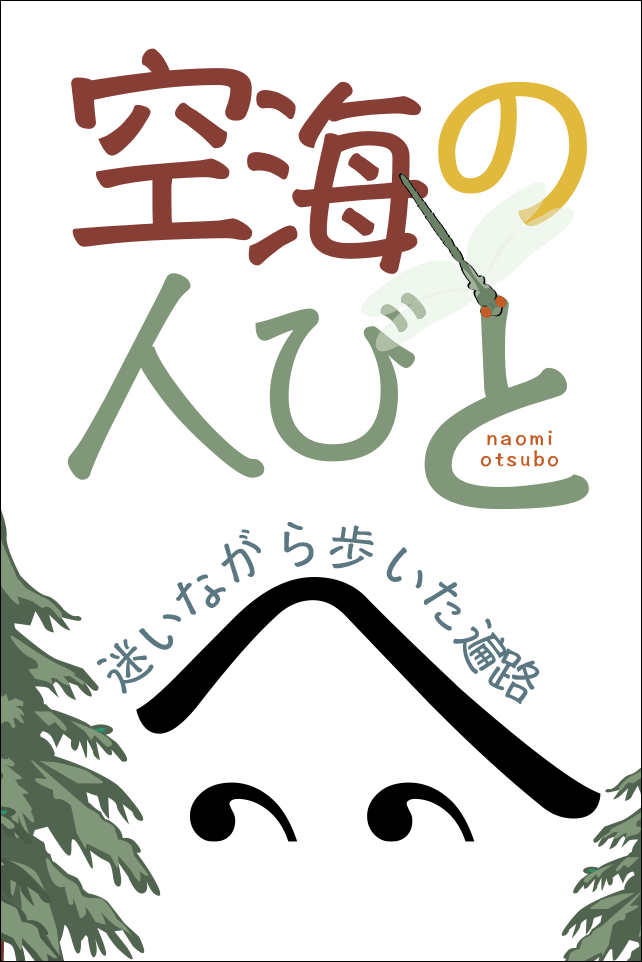 Naomi and I are pleased to announce an upcoming publication: Kukai no Hitobito. This is Naomi’s memoir of her experience as a pilgrim to the Eighty-Eight Sacred Places of Shikoku Pilgrimage in Japan. The text is in Japanese and will be available to purchase in October.
Naomi and I are pleased to announce an upcoming publication: Kukai no Hitobito. This is Naomi’s memoir of her experience as a pilgrim to the Eighty-Eight Sacred Places of Shikoku Pilgrimage in Japan. The text is in Japanese and will be available to purchase in October.
Tag Archives: Shikoku Pilgrimage
Pilgrim
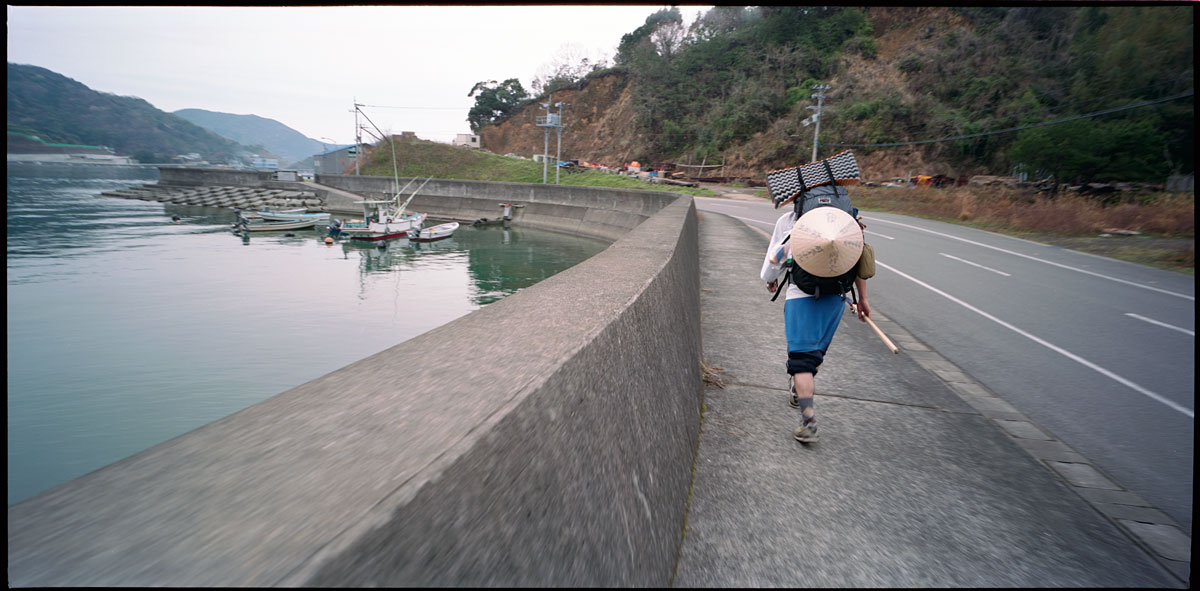 Pilgrims flock to the island of Shikoku in Japan. Through the centuries, the fundamental practice of these pilgrims has not changed: they walk, they pray. To complete the entire route, a little over 1,200km or 750 miles, takes most travelers about fifty days. Some have claimed do this in thirty—a formidable feat. The path is mostly on roads. It hugs the coast and crosses mountains.
Pilgrims flock to the island of Shikoku in Japan. Through the centuries, the fundamental practice of these pilgrims has not changed: they walk, they pray. To complete the entire route, a little over 1,200km or 750 miles, takes most travelers about fifty days. Some have claimed do this in thirty—a formidable feat. The path is mostly on roads. It hugs the coast and crosses mountains.
One hundred years ago, the average pilgrim is said to have spent about one hundred days to complete the pilgrimage. Roads, general health, and modern gear are mostly responsible in changing that. I am grateful of not having to wear the traditional straw sandals and cotton robes, which must have made this journey even harder. 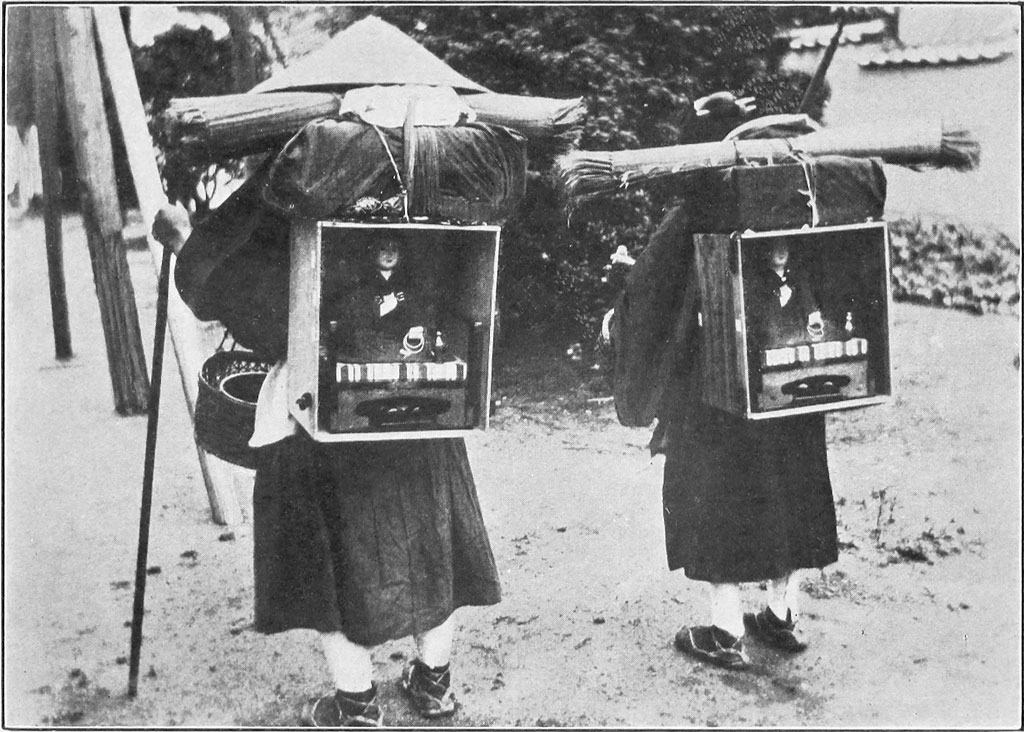 This pair of pilgrims from the early 20th century are described as monks, but wrongly cited as carrying statues of the Buddha—the image on their backs is of Kobo Daishi. The photograph is from the book By Nippon’s Lotus Ponds; Pen Pictures of Real Japan by Matthias Klein and published in 1914. Click on the images for a larger view.
This pair of pilgrims from the early 20th century are described as monks, but wrongly cited as carrying statues of the Buddha—the image on their backs is of Kobo Daishi. The photograph is from the book By Nippon’s Lotus Ponds; Pen Pictures of Real Japan by Matthias Klein and published in 1914. Click on the images for a larger view.
Shugyo Daishi and the Pilgrim
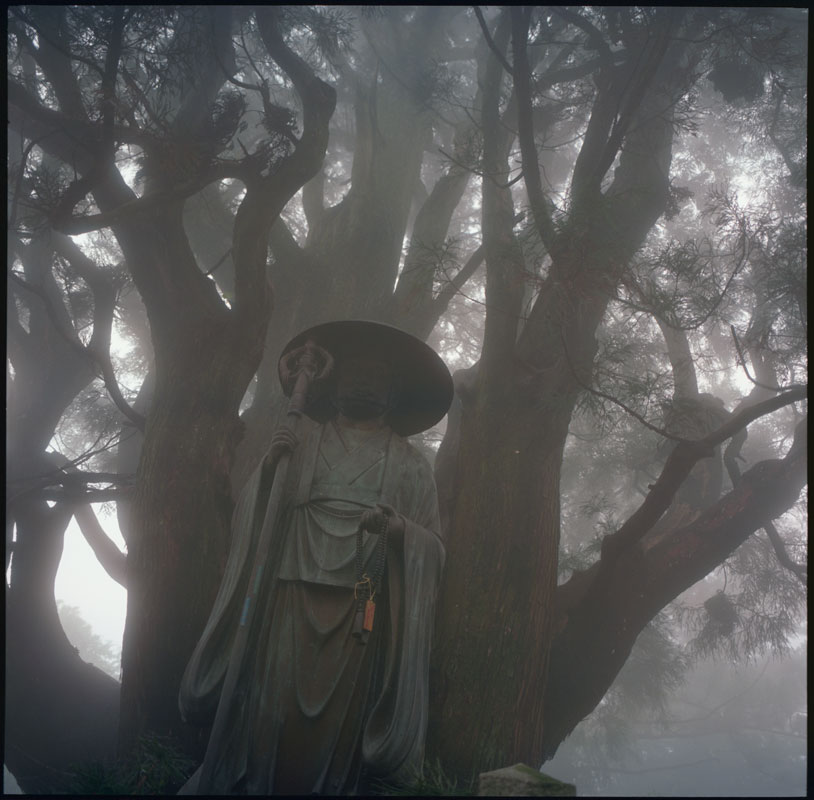 The trail between temples 11 and 12 was enveloped in fog the day we travelled it. The mountain path followed a forested ridge. Then, strangely, the dirt trail ended in a flight of stone steps. As we climbed, a figure materialized from the trees.
The trail between temples 11 and 12 was enveloped in fog the day we travelled it. The mountain path followed a forested ridge. Then, strangely, the dirt trail ended in a flight of stone steps. As we climbed, a figure materialized from the trees.
We had reached Jyouren hermitage, a bangai, an unnumbered temple, one of over a hundred such places on the 88 Sacred Places of Shikoku Pilgrimage. The statue is of Shugyo Daishi. This is not the image of Kobo Daishi, the saint pilgrims follow and the one that attained enlightenment, but the man that was seeking that enlightenment.
The tree behind the statue was said to have been planted by Kobo Daishi when, in a dream, he had a vision of the Buddha Dainishi-nyorai. Click on the image for a larger view.
Passport to Enlightenment
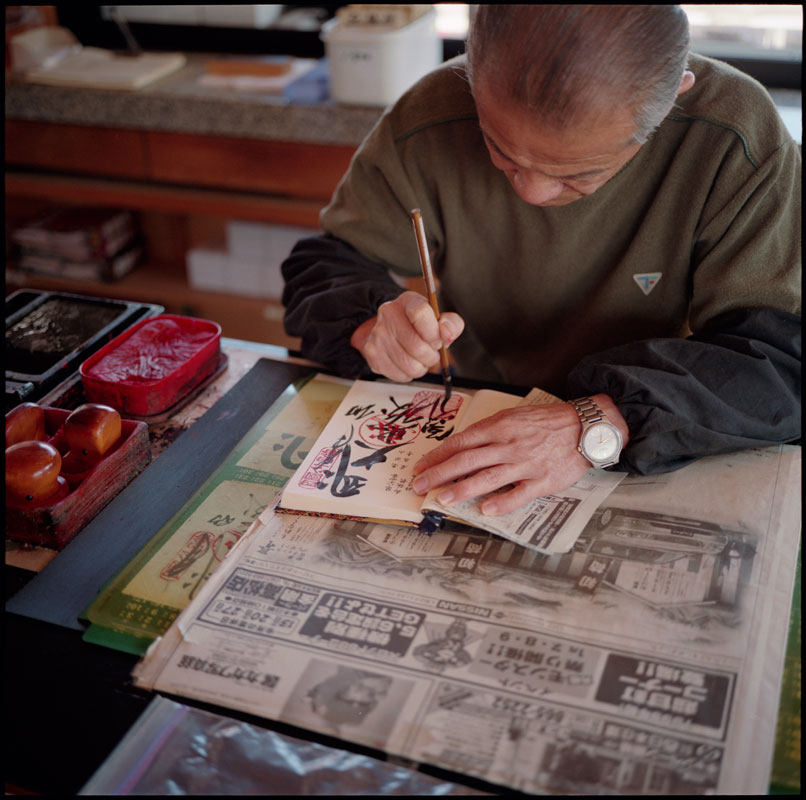 The pilgrim to the Eighty-eight Sacred Places of Shikoku Pilgrimage carries a small book, nokyocho, in which the seal of each of the temples is inscribed, in this case, temple 84. It is one of the most important records of the journey and is treasured as a sacred object. If the pilgrim undertakes another pilgrimage, the same book is used with a new seal being inscribed over the previous ones. Pilgrims that have completed the path multiple times have pages covered red and black from the number of inscriptions. Click on the image for a larger view.
The pilgrim to the Eighty-eight Sacred Places of Shikoku Pilgrimage carries a small book, nokyocho, in which the seal of each of the temples is inscribed, in this case, temple 84. It is one of the most important records of the journey and is treasured as a sacred object. If the pilgrim undertakes another pilgrimage, the same book is used with a new seal being inscribed over the previous ones. Pilgrims that have completed the path multiple times have pages covered red and black from the number of inscriptions. Click on the image for a larger view.
Kumadanaji, Temple 8—Shikoku Pilgrimage
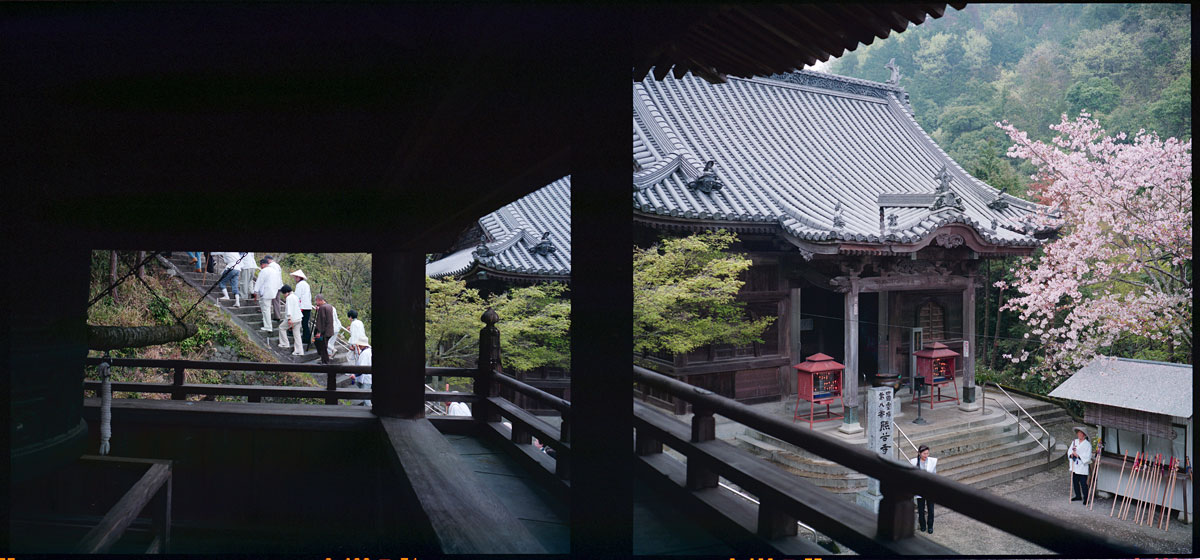 Kumadanaji, Bear Valley Temple, is not a scary as it sounds. Tucked in the end of a small valley, it is a peaceful place. This temple has one of the most impressive compounds on the pilgrimage. The main hall can be seen on the right and the steps on the left lead to the Daishi hall. We climbed the bell tower to ring the temple bell—two good friends, both pilgrims before us, had taken shelter at this temple and were the inspiration for our pilgrimage.
Kumadanaji, Bear Valley Temple, is not a scary as it sounds. Tucked in the end of a small valley, it is a peaceful place. This temple has one of the most impressive compounds on the pilgrimage. The main hall can be seen on the right and the steps on the left lead to the Daishi hall. We climbed the bell tower to ring the temple bell—two good friends, both pilgrims before us, had taken shelter at this temple and were the inspiration for our pilgrimage.
At Kumadanaji, Kobo Daishi is said to have had a vision of the Shinto god of Kumano, who bestowed upon him a small statue of Kannon Bosatsu (Avalokitešvara). Kobo Daishi carved the temple’s main image of Senju Kannon (Avalokitešvara of a thousand hands) to enshine it. Click on the image for a larger view.
The 88 Scared Places of Shikoku Pilgrimage
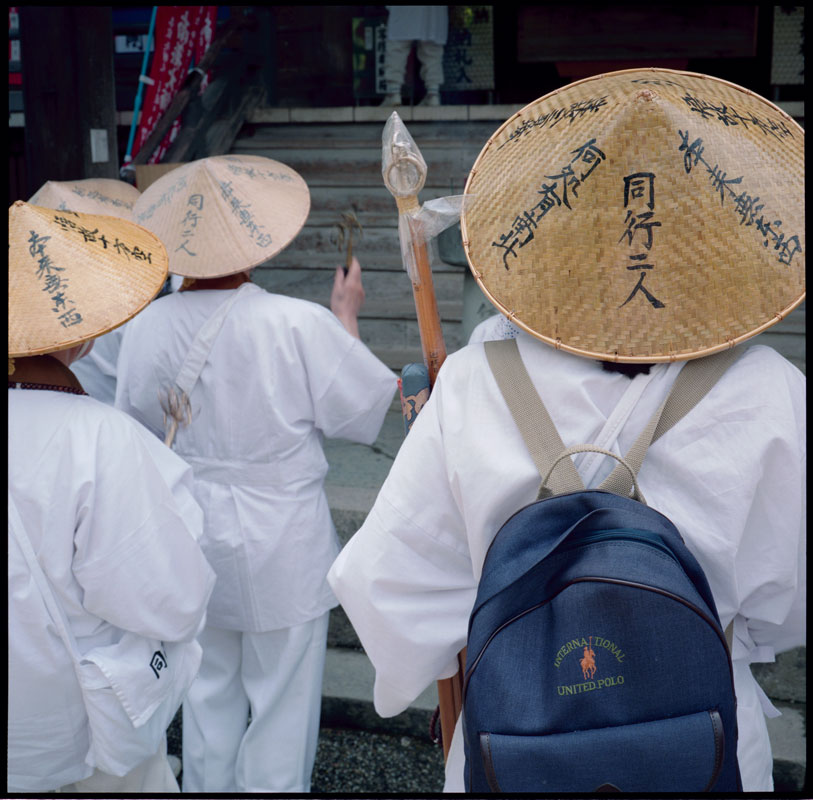 The 88 Scared Places of Shikoku Pilgrimage is probably the most famous pilgrimage in Japan. The route circles the island of Shikoku and takes about 45–60 days to complete on foot, although there are other ways pilgrims choose to travel. Naomi and I had the great fortune to walk this path three times. This year we will be publishing our experience of this remarkable journey.
The 88 Scared Places of Shikoku Pilgrimage is probably the most famous pilgrimage in Japan. The route circles the island of Shikoku and takes about 45–60 days to complete on foot, although there are other ways pilgrims choose to travel. Naomi and I had the great fortune to walk this path three times. This year we will be publishing our experience of this remarkable journey.
These pilgrims are praying at the Daishi hall of Ryõzenji, temple number one. The four characters on the back of the hat (同行二人) are the refrain of the pilgrim—Dõgyõ ninin. Simply translated it means the same journey, two people. The second person to which it refers is Kobo Daishi, the founder of Shingon Buddhism, saint, poet, calligrapher, civil engineer, and the person credited in making this pilgrimage. While the pilgrimage is nonsectarian, every pilgrim puts their faith in O-Daishi-sama, as he is known.
